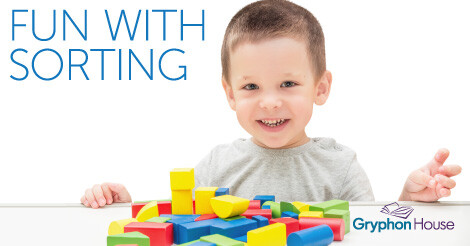Math is often portrayed as a scary thing. Many see it as an obstacle that students must overcome on the path to learning, a necessary evil. Even parents and teachers may think of math only as complex formulas and rule memorization, but math, especially early math, can be much simpler. So simple, in fact, children begin learning it long before they reach school. Math for toddlers consists of hearing numbers and learning to apply them. The primary way this is done is with sorting.
Math is often portrayed as a scary thing. Many see it as an obstacle that students must overcome on the path to learning, a necessary evil. Even parents and teachers may think of math only as complex formulas and rule memorization, but math, especially early math, can be much simpler. So simple, in fact, children begin learning it long before they reach school. Math for toddlers consists of hearing numbers and learning to apply them. The primary way this is done is with sorting.
When teaching your baby math, the first step is showing them how to sort, be that by stacking cups, separating things by color, or putting their toys in groups. Things like addition and subtraction are just other methods of sorting, and children can learn to make that connection through early math games that can be done at school or at home. Books like Math in Minutes by Sharon MacDonald offer quick, easy sorting activities like these that demystify math and teach children to see things in a much simpler way.
Button Box
Math Objectives:
- Children will sort and classify materials
- Children will compare and contrast objects
Materials:
How to Do It:
- Talk to the children a bit about buttons. This can be some history on buttons, a funny story about buttons, or maybe read a book that has to do with buttons
- Pull out the box of buttons and ask children to find buttons they thing are pretty or interesting
- Sort some of the leftover buttons in some way. This could be by color, by number of holes, but material, etc.
- Ask the children to sort their buttons. Talk about how they chose to sort them and why
- Once the buttons have been sorted, use them to teach matching, counting, graphing—whatever lesson you choose to connect it too
Venn-Diagram Shoe Sort
Math Objectives:
- Children will sort and classify objects and explain how the sorting was done
- Children will investigate, identify, and describe data collection
Materials:
- Large gift bag
- Several doll shoes
- Paper
- Blue and yellow markers
- Assorted crayons
How to Do It:
- Put the doll shoes in the gift bag
- Draw a Venn-diagram on the paper using a blue marker for one side and a yellow marker for the other side
- With crayons color in the circles accordingly, using green where they overlap
- Challenge the children to sort the shoes as work shoes, play shoes, or both and place the shoes in the proper part of the diagram
- When they have sorted all the shoes accordingly, challenge them to sort them another way or ask them for another way to sort the shoes
Jug Tally
Math Objectives:
- Children will investigate, identify, and describe various forms of data collection
- Children will compare and contrast objects
- Children will count and tally information from familiar experiences
- Children will collect data in an organized way
Materials:
- Two plastic half-gallon jugs
- Scissors
- A small basket
- Velcro
- 6 inch by 2 inch strips of colored paper
- Paper clips
How to Do It:
- Cut the tops off the two milk jugs; wash the jugs out and remove the labels
- Attach a 6 inch strip of hook-side Velcro vertically along the centerline of each jug
- Cut name strips for each child and have the children write their names on each strip
- Put the name-strips in the basket
- Make different activity titles on pieces of paper and attach them to the jugs using the soft-sided Velcro. The titles should be paired yes-no type statements, like “I like to draw with crayons” vs. “I like to draw with markers,” “I like hot weather” vs. “I like cold weather,” etc.
- Place the jugs beside the door and ask the children to put their name strips inside the jug that has the statement they agree with
- When all the names are accounted for, ask two students to go through the jugs and report how many students picked each statement
- Every few days, change the statements on the jugs so that children can make new choices and redo the activity
